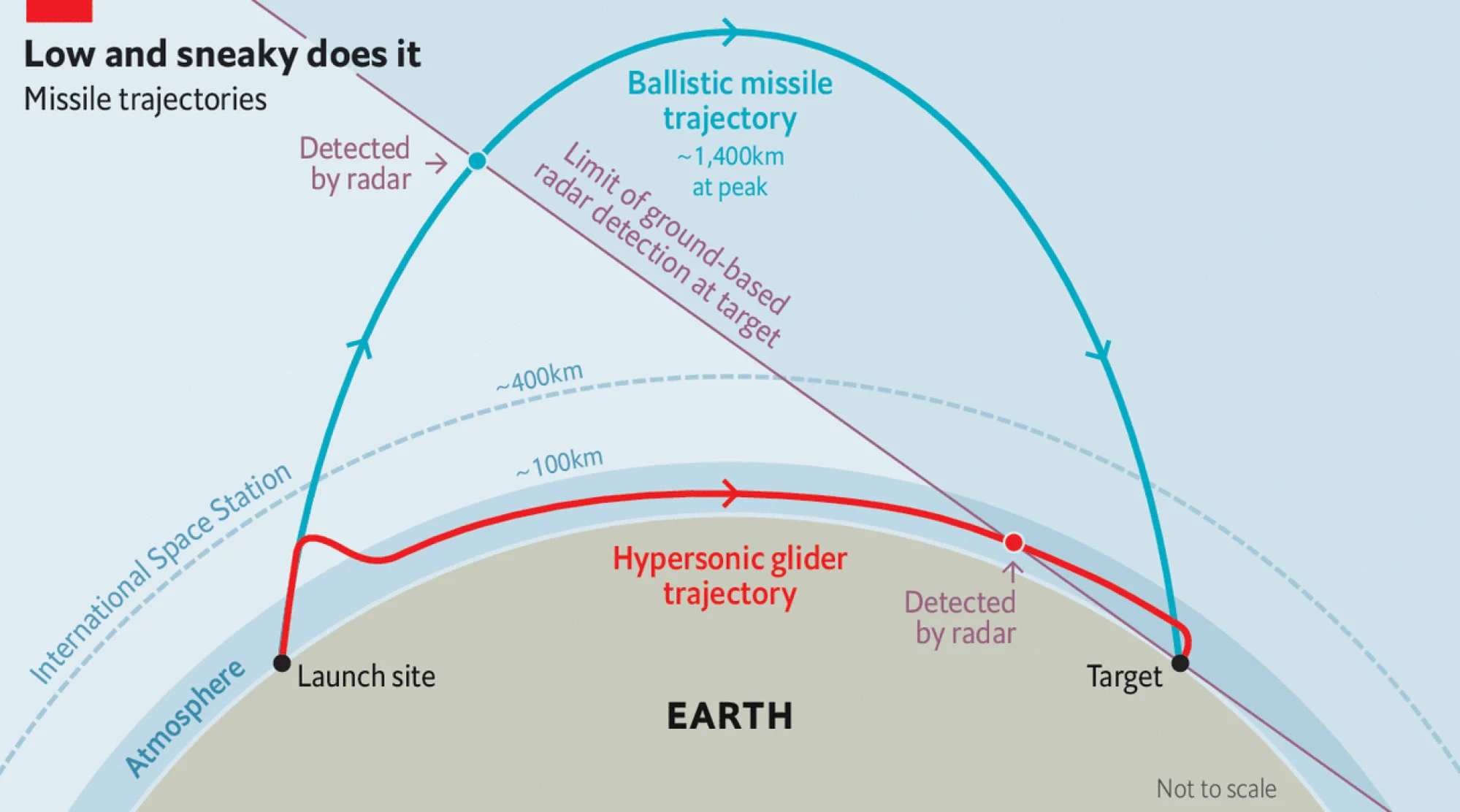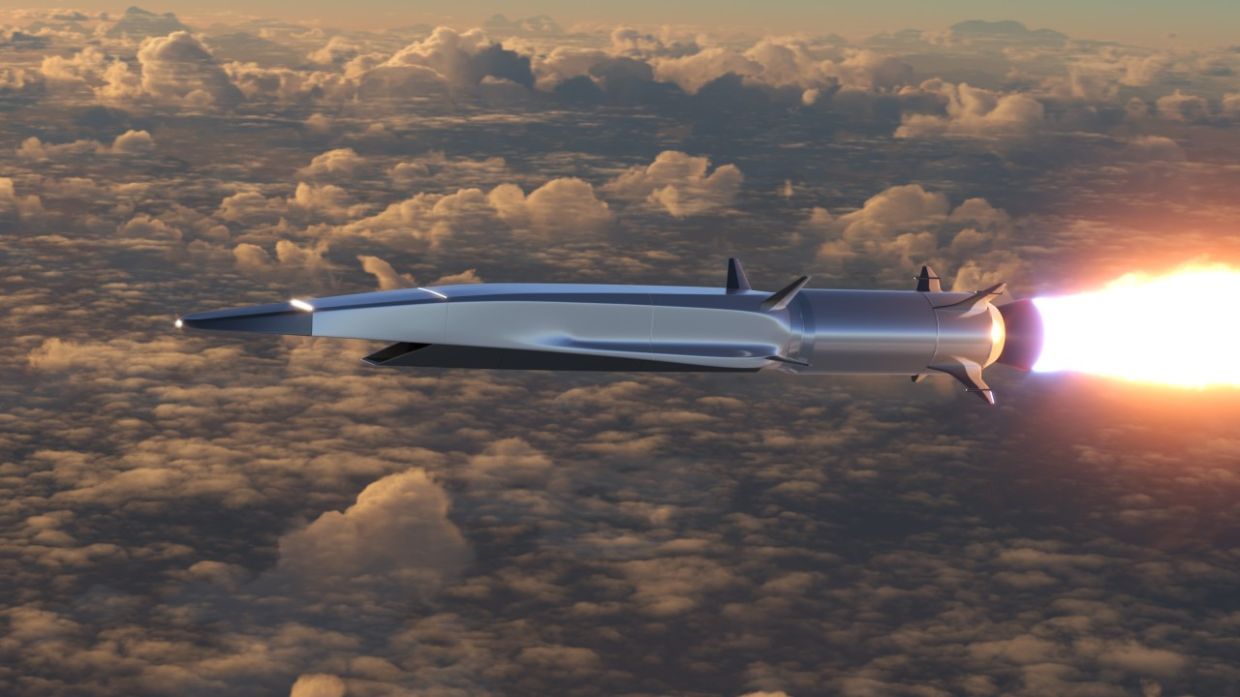Los misiles hipersónicos del tipo HGV (Hypersonic Glide Vehicle), suman a su gran velocidad (Por encima de MACH 5), una extraordinaria maniobrabilidad durante su vuelo, lo que hace muy difícil adquirirlos y neutralizarlos para los sistemas de DefAe & Mis actualmente en servicio. Investigadores de la Air Force Early Warning Academy de China, afirman haber desarrollado un sistema que, mediante el empleo de AI, permitiría predecir la trayectoria del HGV en la fase final de su ataque. La capacidad de la AI para el procesamiento de enorme cantidad de información, obtenida de los parámetros de vuelo de la amenaza desde que es detectada por el radar, permitiría predecir con alto grado de certeza, el curso final de ataque y aplicar así una respuesta cinética para neutralizarlos.
Chinese military researchers say they have developed an artificial intelligence technology that can estimate the the course of a hypersonic glide missile as it homes in on a target at more than five times the speed of sound.
An air defence system powered by AI can estimate the incoming weapon’s potential kill trajectory and initiate a counter response with a three-minute lead time, according to the researchers.
The average missile stays within a target zone of 8km (5 miles), which is quite narrow for a weapon that can cover the distance in as few as two seconds.
“The world’s military powers are currently engaging in a fierce arms race around the development of hypersonic glide vehicles, bringing new and severe challenges to air and space safety,” said Zhang Junbiao, a computer scientist from the early warning intelligence department of the Air Force Early Warning Academy in Wuhan.
“Trajectory prediction is of great significance to combat intent assessment and aerospace defence interception,” Zhang and his colleagues wrote in a paper published in the Journal Of Astronautics, a peer-reviewed publication run by the Chinese Society of Astronautics ,on April 30.

At speeds of Mach 5 or higher it leaves little time for an air defence system to respond and it is generally believed that existing technology cannot stop a hypersonic glide missile.
But Zhang said AI could handle such uncertain tasks.
The defending side usually knows nothing about the mass, size, shape, aerodynamic control system or purpose of enemy weapons, but the AI can make a fairly accurate guess by analysing the observed flight data.
A missile, however advanced or fast, needs to obey certain physical laws, and every move it makes will give out some small but useful hints about its design, capabilities and mission, according to the researchers.
A machine learning algorithm can therefore learn from data collected in the early stages of a hypersonic flight, and use the newly acquired knowledge to calculate the most probable course in the final stages of the flight.
Zhang and his colleagues admitted that turning this theory into a practical model was not easy. They said the raw data collected by an early warning system contains lots of noise that could confuse the AI and too much data could also overwhelm the computer.
To counter this, the team developed a unique deep learning algorithm that could automatically remove noises from signals they detected. To save calculation resources, the algorithm also mimics the operation of the human brain by focusing only on the latest, most important data.
Though more sophisticated than any previous AI for hypersonic trajectory prediction, the new system can run on a laptop computer and produce a result within 15 seconds, according to the study.
Simulated tests suggested the method remains effective against a wide range of weapons flying at speeds of up to Mach 12.
China and Russia have developed numerous types of hypersonic weapons, while the United States is racing to catch up and carried out a successful test at Mach 5 earlier this month.
Military researchers have proposed numerous countermeasures, including space-based early warning systems that can detect and intercept the hypersonic weapon in the early or middle stage of flight, high-powered lasers that can blind or destroy sensors or missiles that can also operate at hypersonic speed.
But most of these technologies are still under development.
The Chinese navy has reportedly installed a new cannon in newer warships that it said could defeat a hypersonic weapon by firing 10,000 rounds of shells per minute at its predicted course.
A Beijing-based researcher involved in a military radar programme said AI would play a “big role” in hypersonic weapon defence but its effectiveness depended on many other factors.
A hypersonic missile, for instance, is surrounded by extremely hot, ionised gas that can distort the radar or heat signals, making precise detection of its movements difficult, according to the researcher.
Fuente: https://www.thestar.com.my


